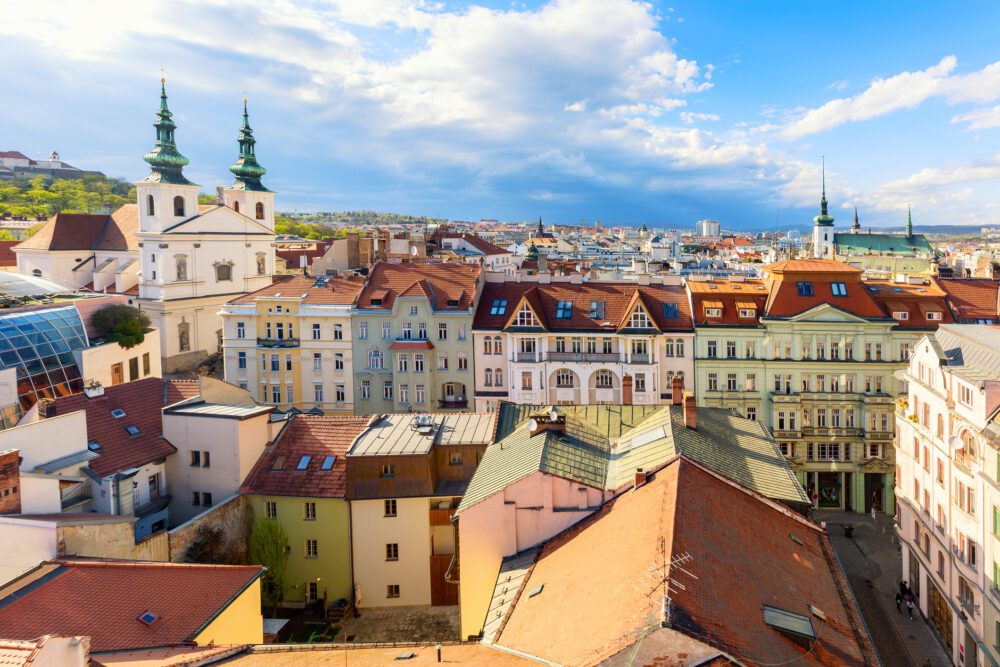
Introduction
Brno, the vibrant capital of the South Moravian region, offers a captivating blend of history, culture, and modernity that sets it apart as one of the Czech Republic‘s most intriguing destinations. While Prague may steal the spotlight with its iconic landmarks and bustling tourist scene, Brno holds its own charm and allure, drawing visitors with its rich history, dynamic arts scene, and lively atmosphere. Nestled amidst rolling hills and vineyards, Brno boasts a picturesque setting that sets the stage for unforgettable experiences, from exploring historic sites and cultural institutions to indulging in culinary delights and vibrant nightlife.
Founded over a thousand years ago, Brno boasts a storied past that has left its mark on the cityscape. As the former capital of the Margraviate of Moravia and a historic centre of trade and commerce, Brno is dotted with architectural treasures, including stunning cathedrals, medieval fortifications, and elegant palaces. Today, the city is a thriving hub of innovation and creativity, home to prestigious universities, cutting-edge technology companies, and a burgeoning arts and music scene. Whether wandering the cobblestone streets of the Old Town, admiring the modernist masterpieces of architect Ludwig Mies van der Rohe or savouring traditional Moravian cuisine in a cosy tavern, visitors to Brno are sure to be enchanted by its unique blend of old-world charm and contemporary flair.
Table of Contents
Map of the Best Things to Do in Brno
Brno Old Town Hall
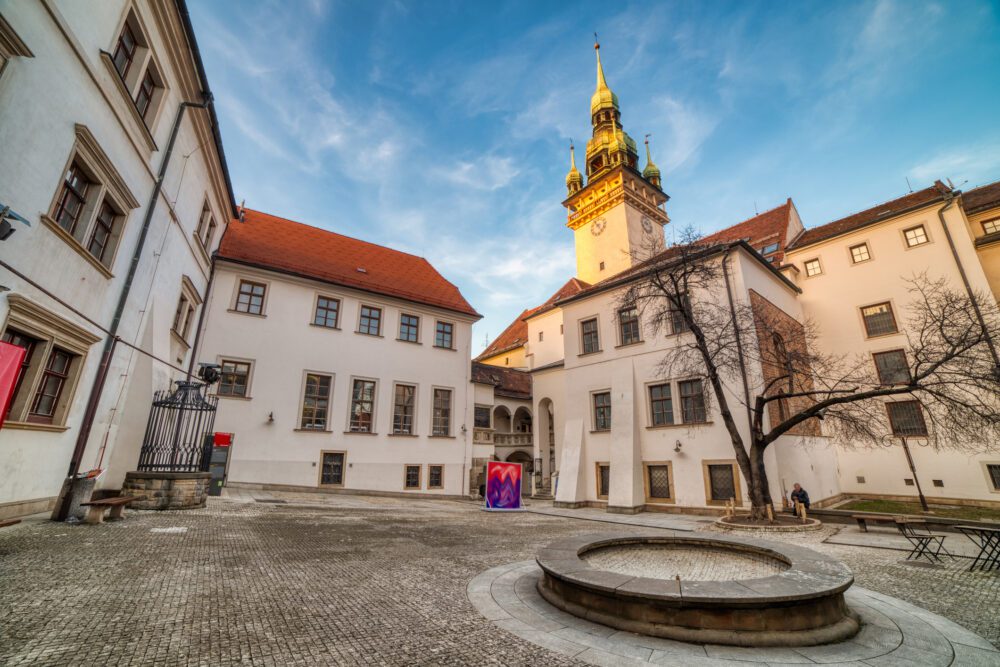
Brno’s Old Town Hall stands as a testament to the city’s rich history and architectural heritage, commanding attention with its striking Gothic façade and imposing tower. Dating back to the 13th century, the Old Town Hall has served as a symbol of municipal authority and governance for centuries, witnessing the ebb and flow of Brno’s fortunes through times of prosperity and turmoil. One of the hall’s most notable features is its iconic crooked spire, a result of centuries of settlement and subsidence that have left the tower leaning at a precarious angle. Visitors can climb the tower’s narrow staircase to enjoy panoramic views of the cityscape and the surrounding Moravian countryside, offering a unique perspective on Brno’s layout and landmarks.
Inside the Old Town Hall, visitors can explore a wealth of historical exhibits and artefacts that trace the city’s evolution from medieval times to the present day. The Hall’s Renaissance-style halls and chambers provide a glimpse into Brno’s past as a thriving centre of commerce and culture, while interactive displays and multimedia presentations offer engaging insights into the city’s architecture, traditions, and notable figures. Guided tours are available for those eager to delve deeper into Brno’s history, providing fascinating anecdotes and behind-the-scenes access to areas not typically open to the public. Additionally, the Old Town Hall square often hosts lively events and festivals throughout the year, ranging from markets and concerts to historical reenactments, making it a vibrant hub of activity and a must-visit destination for travellers exploring Brno’s historic heart.
The Vegetable Market (Zelný trh)

The Vegetable Market in Brno, known locally as Zelný trh, has been a bustling hub of commerce and community for centuries, dating back to medieval times when it served as a vital trading centre for farmers and merchants. Situated in the heart of the Old Town, this historic market square has retained much of its traditional charm and character, attracting locals and visitors alike with its vibrant atmosphere and diverse offerings. Here, visitors can wander among stalls piled high with fresh produce, colourful flowers, and local delicacies, immersing themselves in the sights, sounds, and aromas of Brno’s culinary culture.
Today, the Vegetable Market continues to play a vital role in Brno’s social and economic life, serving as a gathering place for residents to shop, socialize, and savour the flavours of the region. Travelers exploring the market will find an array of seasonal fruits and vegetables sourced from nearby farms, along with artisanal cheeses, homemade pastries, and other gourmet delights. For those seeking an authentic taste of Czech cuisine, the market offers an excellent opportunity to sample traditional dishes such as trdelník (sweet pastry), smažený sýr (fried cheese), and klobása (sausage), freshly prepared by local vendors. Additionally, the market square is often enlivened by street performers, cultural events, and seasonal festivals, making it a vibrant and dynamic destination that captures the essence of Brno’s culinary heritage.
Labyrinth under Vegetable Market

Beneath the bustling Vegetable Market in Brno lies an intriguing network of underground passages known as the Labyrinth under Vegetable Market. This labyrinthine complex has a rich history dating back to the Middle Ages when it served various purposes, including storage, shelter, and secret escape routes. Over the centuries, the underground tunnels were used for a myriad of activities, from wine storage to defence strategies during times of conflict. Today, visitors can explore this fascinating underground world and delve into the mysteries of Brno’s past.
Venturing into the Labyrinth under Vegetable Market offers an immersive journey through time, with guided tours providing insights into the historical significance of the underground passages. Visitors can marvel at the well-preserved architectural features, including vaulted ceilings, stone arches, and ancient artefacts while learning about the daily life and customs of medieval Brno. Practical tips for exploring the labyrinth include wearing comfortable shoes and bringing a jacket or sweater, as the underground passages can be cool and damp. Additionally, visitors should book guided tours in advance to secure their spot and gain access to exclusive areas of the labyrinth not open to the general public.
Moravian Museum

Founded in 1818, the Moravian Museum in Brno stands as a beacon of cultural preservation and historical exploration in the heart of Moravia. Housed in several buildings across the city, including the Dietrichstein Palace and the Governor’s Palace, the museum boasts an extensive collection of artefacts, artworks, and exhibits that showcase the rich heritage of the Moravian region. Visitors can delve into various aspects of Moravian history, archaeology, ethnography, and natural science through engaging displays and interactive installations.
Practical tips for visiting the Moravian Museum include planning your visit in advance to make the most of your time and explore the different branches of the museum. Guided tours are available for those seeking deeper insights into specific areas of interest, such as archaeology or fine arts. Additionally, visitors can take advantage of special events, lectures, and workshops organized by the museum to enhance their understanding of Moravian culture and history.
Cathedral of St. Peter and St. Paul
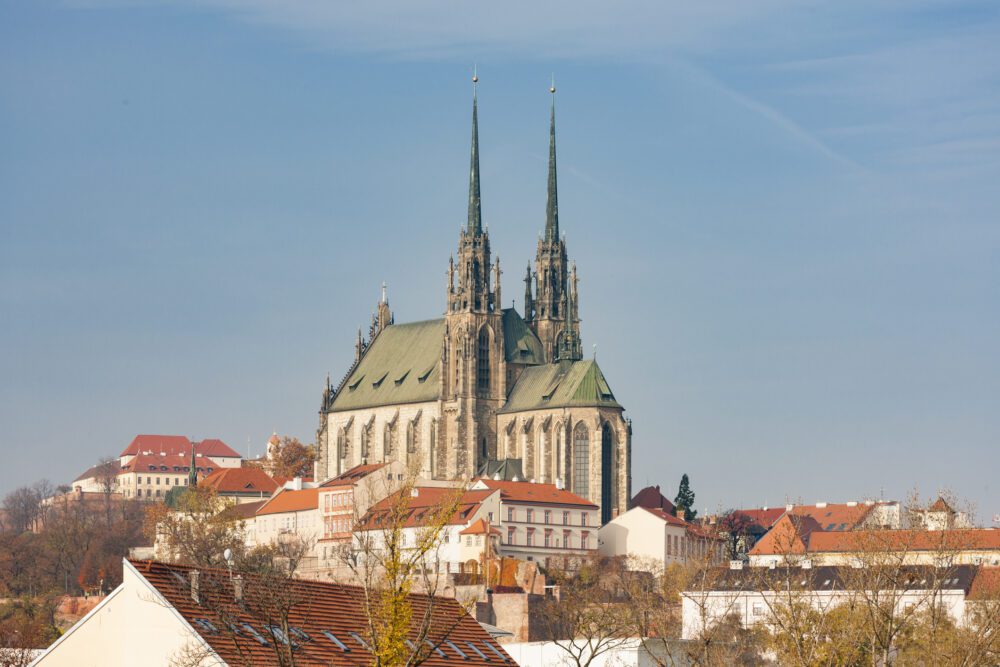
The Cathedral of St. Peter and St. Paul, commonly known as Petrov, is one of the most iconic landmarks in Brno, towering over the cityscape with its majestic twin towers. Originally founded in the 11th century, the cathedral has undergone several renovations and reconstructions over the centuries, resulting in a stunning blend of architectural styles, including Romanesque, Gothic, and Baroque elements. The cathedral’s interior is equally impressive, featuring intricate frescoes, ornate altars, and beautiful stained glass windows that showcase the rich religious and artistic heritage of the region.
Practical tips for visiting the Cathedral of St. Peter and St. Paul include exploring both the exterior and interior of the building to fully appreciate its architectural and artistic significance. Guided tours are available for those interested in learning more about the cathedral’s history and symbolism, offering insights into its role as a spiritual and cultural centre in Brno. Visitors should also make sure to check the cathedral’s opening hours, as it may be closed to the public during religious services or special events.
Capuchin Church and Crypt

The Capuchin Church and Crypt in Brno is a fascinating historical site that offers a unique glimpse into the city’s past. Dating back to the 17th century, the church is known for its striking Baroque architecture and serene interior adorned with intricate frescoes and ornate decorations. However, the main attraction lies beneath the church, where visitors can explore the Capuchin Crypt, a network of underground tombs that served as the final resting place for members of the Capuchin order and other prominent figures from Brno’s history. The crypt contains the mummified remains of over 20 Capuchin monks, preserved in a remarkably well-preserved state due to the crypt’s dry and well-ventilated conditions.
Practical tips for visiting the Capuchin Church and Crypt include wearing appropriate attire out of respect for the religious nature of the site and being mindful of the solemn atmosphere inside the crypt. Guided tours are available for those who wish to learn more about the history and significance of the church and crypt, providing valuable insights into Brno’s religious and cultural heritage. Visitors should also be aware that photography may be restricted or prohibited in certain areas of the church and crypt, so it’s important to respect any posted rules and regulations.
Náměstí Svobody

Namesti Svobody, or Freedom Square, is one of the most iconic and bustling public spaces in Brno. Originally established in the 13th century, the square has undergone numerous transformations over the centuries and serves as a vibrant hub of activity in the heart of the city. Dominated by impressive architectural landmarks, such as the Parnas Fountain and the Baroque Holy Trinity Column, Namesti Svobody is a popular gathering spot for locals and visitors alike. The square is surrounded by elegant buildings, stylish cafes, and shops, making it an ideal place to relax, people-watch, and soak up the atmosphere of Brno.
Practical tips for visiting Namesti Svobody include exploring the surrounding streets and alleys, where you’ll find a variety of shops, restaurants, and cultural attractions. The square is also a popular venue for outdoor events and festivals throughout the year, so be sure to check the local events calendar to see what’s happening during your visit. Additionally, visitors should take advantage of the opportunity to climb to the top of the Holy Trinity Column for panoramic views of the city and surrounding area.
10-Z Bunker
The 10-Z bunker, also known as the Brno Nuclear Bunker, is a fascinating underground complex that offers a glimpse into Brno’s Cold War history. Constructed during the communist era in the 1950s, this former civil defence shelter was designed to protect local residents in the event of a nuclear attack. Located beneath the city centre, the bunker consists of a network of tunnels and rooms equipped with decontamination chambers, medical facilities, and communication equipment. Today, visitors can explore this underground labyrinth and learn about the city’s Cold War past through interactive exhibits, artefacts, and multimedia presentations.
Practical tips for visiting the 10-Z bunker include booking a guided tour in advance to ensure availability and to fully appreciate the historical significance of the site. Tours typically last around an hour and provide insightful commentary on the bunker’s construction, purpose, and the daily life of its inhabitants during the Cold War era. Visitors should also be prepared to descend several flights of stairs and navigate narrow passageways, as the bunker’s layout can be labyrinthine. Additionally, photography is allowed inside the bunker, so be sure to bring a camera to capture the unique atmosphere and historical artefacts. A visit to the 10-Z bunker offers a fascinating journey back in time and provides valuable insights into Brno’s role during the Cold War period.
Špilberk Castle
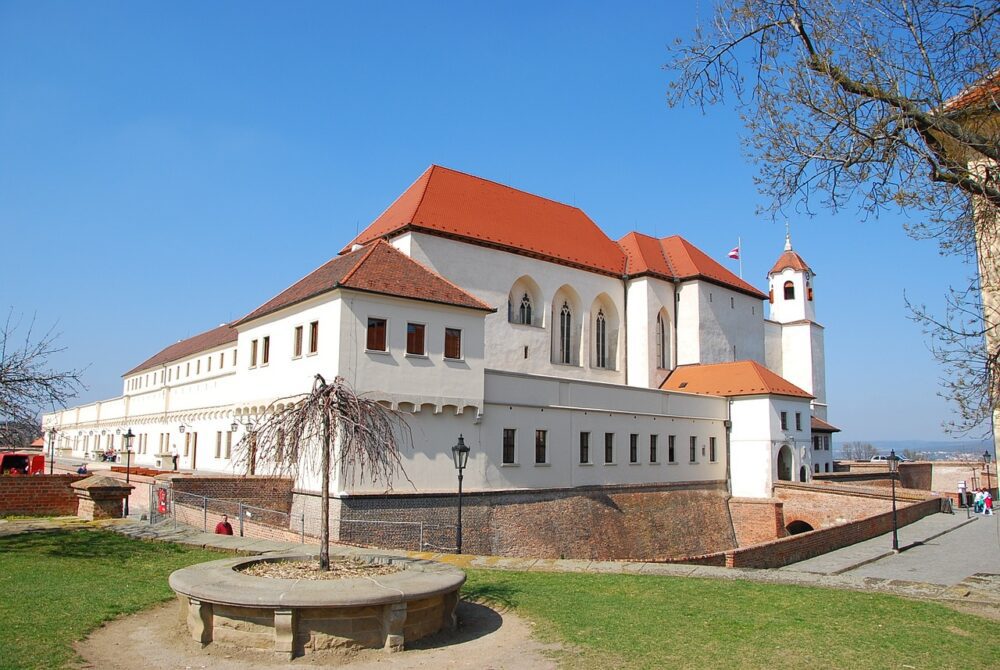
Perched atop a hill overlooking Brno, Spilberk Castle stands as a symbol of the city’s rich history and architectural heritage. Originally built in the 13th century, the castle served as a royal fortress, a military stronghold, and later, as a notorious prison. Throughout its history, Spilberk Castle played a crucial role in defending the region against various invasions and conflicts. Over the centuries, the castle underwent several renovations and expansions, resulting in its current Renaissance-style appearance. Today, visitors can explore the castle grounds, wander through its labyrinthine corridors, and admire panoramic views of Brno from its towering battlements.
Practical tips for visiting Spilberk Castle include wearing comfortable shoes, as there are many steps and uneven surfaces to navigate within the castle complex. Guided tours are available for those who wish to delve deeper into the castle’s history and learn about its former inhabitants and prisoners. Additionally, visitors can explore the castle’s exhibitions, which include displays of its military history, the life of prisoners, and medieval weaponry. Don’t miss the opportunity to stroll through the castle gardens, which offer a tranquil retreat with scenic views of Brno and the surrounding countryside.
St. James Church and Brno Ossuary
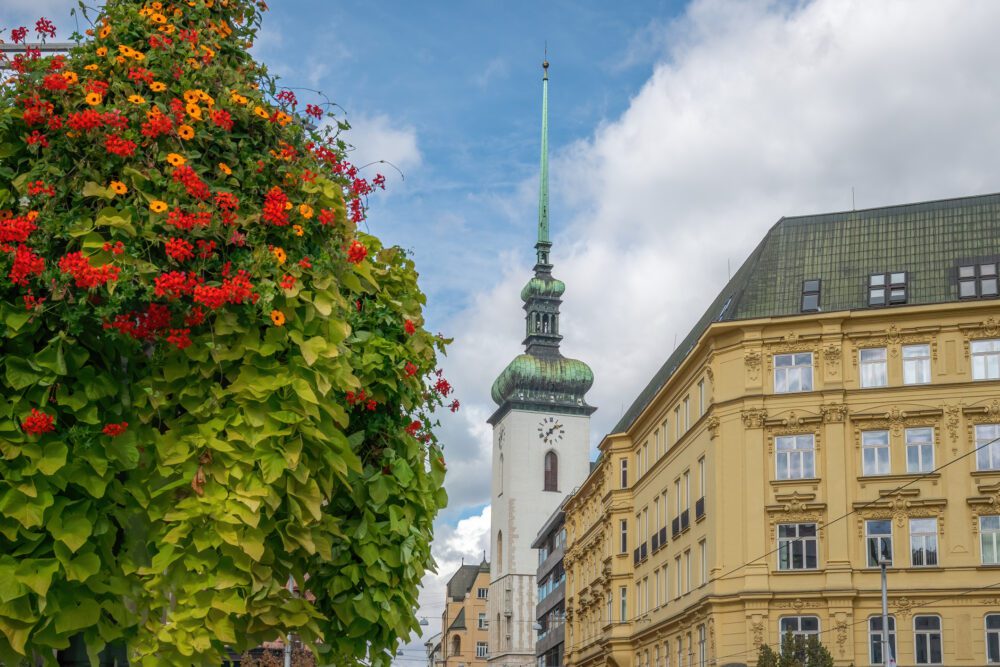
St. James Church, a majestic Gothic structure located in the heart of Brno’s Old Town, stands as one of the city’s most significant religious landmarks. Dating back to the 13th century, the church has undergone several reconstructions and renovations over the centuries, resulting in its current appearance characterized by intricate Gothic architecture. One of the highlights of St. James Church is its impressive 92-meter-high tower, which offers panoramic views of Brno and its surroundings. Inside the church, visitors can admire beautiful frescoes, ornate altars, and intricately carved wooden sculptures. However, the most remarkable feature lies beneath the church—the Brno Ossuary, one of the largest underground ossuaries in Europe. Discovered in 2001 during renovations, the ossuary contains the remains of thousands of people and provides a haunting glimpse into Brno’s medieval past.
Practical tips for visiting St. James Church and the Brno Ossuary include taking a guided tour to fully appreciate the historical and architectural significance of these sites. Visitors should be prepared to descend into the underground crypt of the church to access the ossuary, which may not be suitable for those with mobility issues or claustrophobia. Photography is generally not permitted inside the ossuary out of respect for the deceased. Additionally, visitors should dress modestly and respectfully when entering the church, as it is still an active place of worship. A visit to St. James Church and the Brno Ossuary offers a unique opportunity to delve into Brno’s rich history and uncover fascinating stories from centuries past.
Moravian Gallery
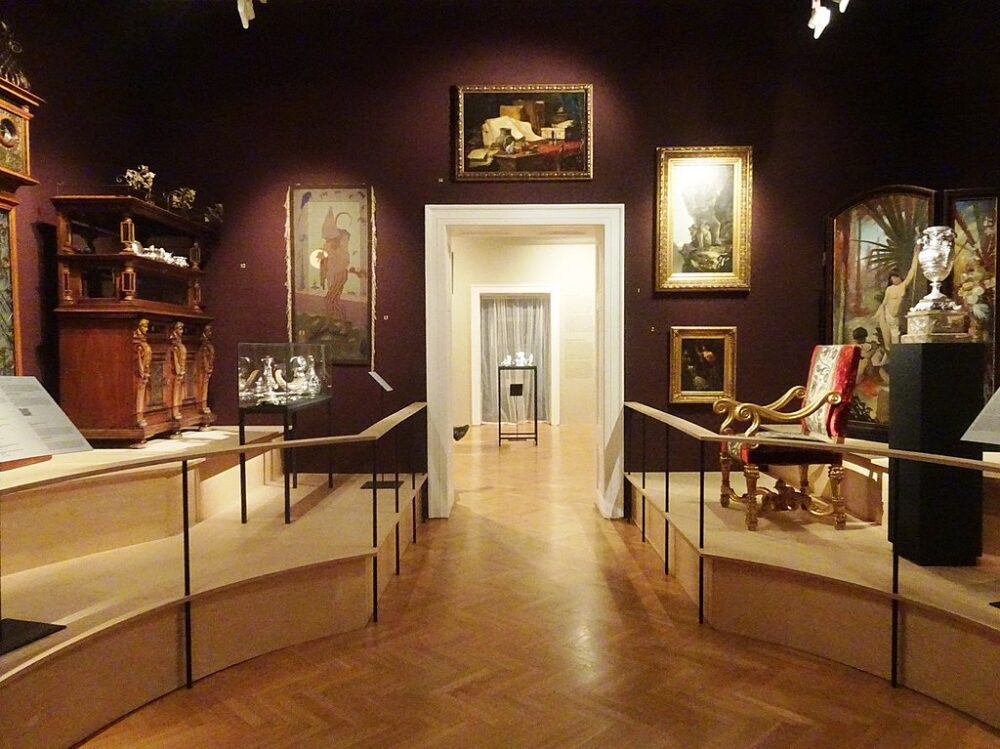
The Moravian Gallery in Brno is a cultural institution renowned for its extensive collection of fine art, decorative arts, and contemporary works. Established in 1961, the gallery has since grown to encompass several buildings across the city, each housing a diverse array of artworks spanning various periods and styles. One of the gallery’s highlights is the Governor’s Palace, a stunning Renaissance-era building that serves as its main exhibition space. Here, visitors can explore a rich tapestry of art, including paintings, sculptures, and decorative objects from the Middle Ages to the present day. The Moravian Gallery also boasts an impressive collection of Czech modern art, featuring works by renowned artists such as František Kupka and Alfons Mucha, providing insight into the country’s artistic heritage.
Practical tips for visiting the Moravian Gallery include checking the gallery’s website for information on current exhibitions and opening hours, as these may vary depending on the season and special events. Guided tours are available for those who wish to gain deeper insight into the gallery’s collections and history, offering a more immersive experience. Visitors should also take advantage of the gallery’s amenities, such as onsite cafes and gift shops, where they can relax and purchase souvenirs to commemorate their visit.
Villa Tugendhat
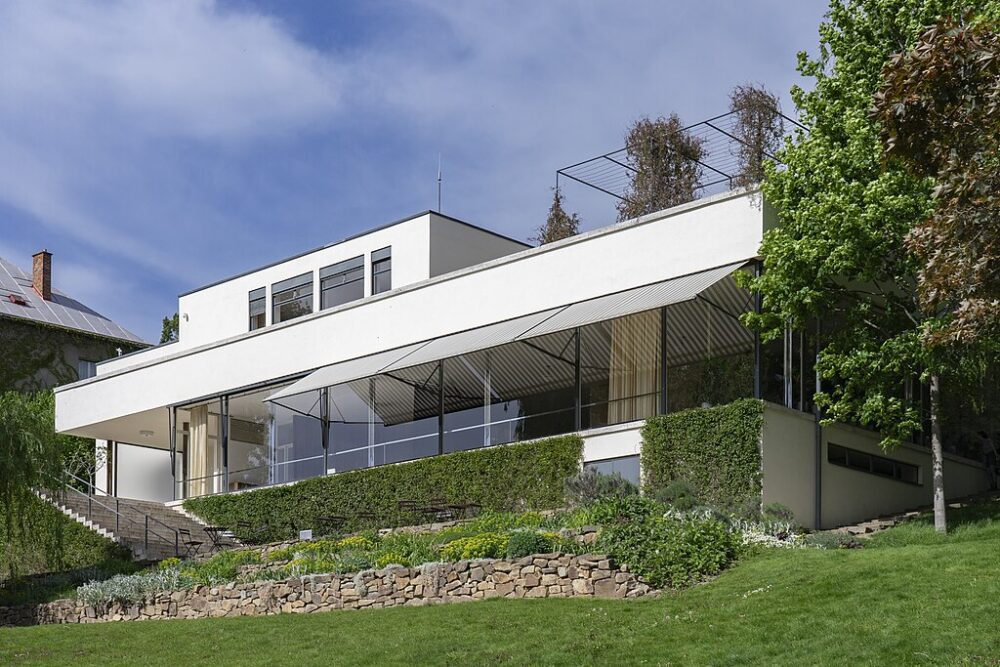
Villa Tugendhat is a masterpiece of modern architecture located in Brno, Czech Republic, designed by the renowned architect Ludwig Mies van der Rohe. Completed in 1930, the villa is celebrated for its groundbreaking design, which seamlessly blends minimalist aesthetics with functionalist principles. Commissioned by the wealthy Tugendhat family, the villa served as their luxurious residence, featuring innovative features such as an open-plan layout, floor-to-ceiling windows, and cutting-edge building materials. The villa’s most iconic feature is the onyx wall that separates the living space from the terrace, allowing natural light to filter through and creating a sense of harmony between the interior and exterior environments.
Visitors to Villa Tugendhat can embark on guided tours to explore its meticulously preserved interiors, which showcase the villa’s original furnishings and architectural details. Practical tips for visiting include booking tours in advance, as the villa has limited capacity and tends to sell out quickly. Additionally, visitors should be aware of strict conservation measures in place to protect the villa’s delicate features, such as the requirement to wear protective shoe covers and refrain from touching surfaces. Photography is also restricted inside the villa, so visitors are encouraged to soak in the beauty of the space without the distraction of cameras. A visit to Villa Tugendhat offers a rare opportunity to step back in time and experience the timeless elegance of modernist design in one of Europe’s most iconic architectural landmarks.
Lužánky Park

Luzanky Park, located in the heart of Brno, is a serene oasis of greenery that offers locals and visitors alike a peaceful escape from the hustle and bustle of city life. Established in the 18th century, the park has a rich history and has undergone several transformations over the years, evolving from a private garden for the wealthy Lichtenstein family to a public park beloved by residents of Brno. Today, Luzanky Park spans over 50 hectares and features lush lawns, scenic pathways, and majestic tree-lined avenues, making it an ideal spot for leisurely strolls, picnics, and outdoor activities.
Practical tips for exploring Luzanky Park include wearing comfortable walking shoes and bringing along a picnic to enjoy amidst the park’s picturesque surroundings. Visitors can also take advantage of the park’s various amenities, including playgrounds for children, sports facilities, and tranquil ponds. Additionally, the park hosts cultural events and concerts throughout the year, providing opportunities for visitors to immerse themselves in the local arts scene.
Veveří Castle
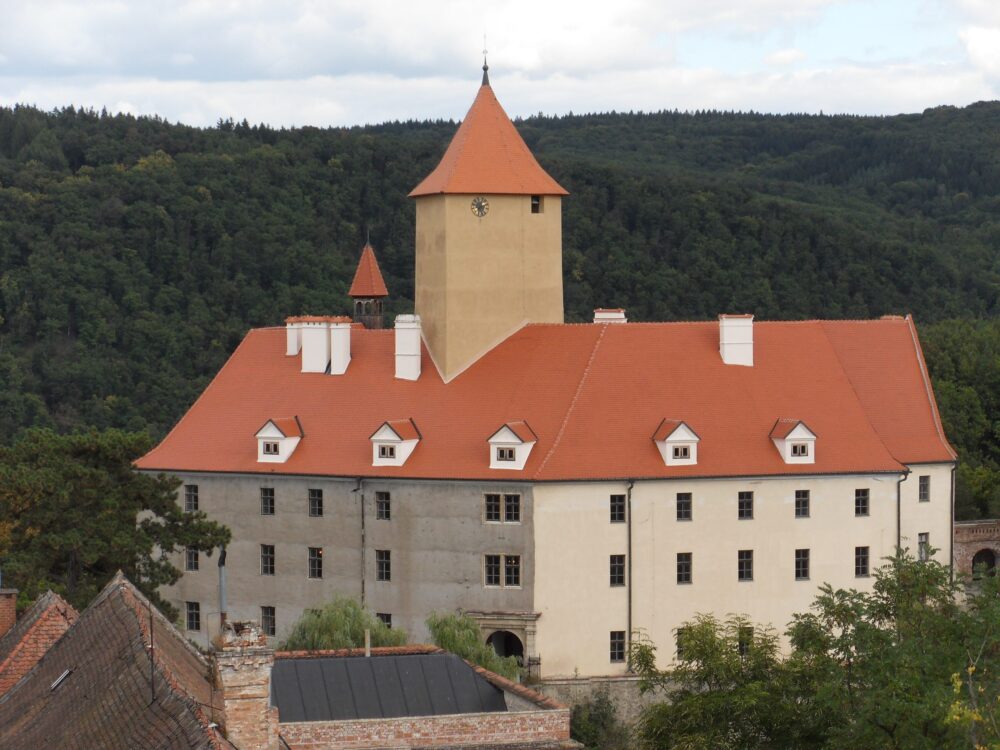
Perched majestically on a rocky promontory overlooking the Svratka River, Veveri Castle is a stunning medieval fortress that dates back to the 11th century. Originally built as a wooden fortress, it was later reconstructed in stone by the Přemyslid dynasty. Throughout its history, Veveri Castle has served various purposes, including as a royal residence, a strategic military stronghold, and a prison. Today, the castle stands as a remarkable architectural landmark, offering visitors a glimpse into the region’s rich history and providing panoramic views of the surrounding countryside.
Practical tips for visiting Veveri Castle include wearing sturdy footwear, as the castle grounds can be uneven and involve some uphill walking. Visitors can explore the castle’s well-preserved fortifications, including its imposing walls, towers, and courtyards. Guided tours are available for those who wish to learn more about the castle’s history and architecture, while the castle’s picturesque setting also makes it an ideal spot for photography enthusiasts. Additionally, visitors can enjoy leisurely walks along the riverbank or stop by the nearby village of Veveri to explore its charming streets and sample local cuisine. Veveri Castle offers a fascinating journey back in time and is a must-visit destination for history enthusiasts and anyone seeking to experience the medieval heritage of the Czech Republic.
Moravian Karst

Moravian Karst is a captivating natural wonder located just a short distance from Brno, Czech Republic. This expansive limestone landscape is renowned for its striking geological features, including underground caves, caverns, and gorges carved out by the flowing waters of the Punkva River. The karst region has a rich history dating back millions of years, with its unique geological formations formed through the dissolution of soluble rocks such as limestone and dolomite. The Moravian Karst is home to over 1,100 caves and abysses, making it one of the most significant karst regions in Central Europe.
Practical tips for exploring Moravian Karst include wearing appropriate clothing and footwear, as the terrain can be rugged and uneven. Visitors can embark on guided tours of some of the region’s most renowned caves, such as the Punkva Caves and the Macocha Abyss. These tours offer a fascinating insight into the underground world of the karst, with opportunities to marvel at stalactites, stalagmites, and other spectacular formations. Additionally, outdoor enthusiasts can enjoy hiking and cycling trails that wind through the picturesque landscape, providing stunning views of the surrounding countryside. Moravian Karst is a haven for nature lovers and adventure seekers alike, offering a unique opportunity to explore the beauty and wonder of the natural world.
Conclusion
Brno offers a diverse array of attractions and activities that cater to travellers of all interests. From its rich historical heritage to its stunning natural landscapes, the city presents a unique blend of culture, history, and outdoor adventure. Whether exploring the historic Old Town, delving into the depths of the Moravian Karst, or immersing oneself in the vibrant cultural scene, visitors to Brno are sure to find something to captivate and delight.
With its wealth of historical sites, cultural landmarks, and natural wonders, Brno truly has something for everyone. Whether you’re a history buff, an outdoor enthusiast, or simply seeking a relaxing getaway, this charming Czech city promises an unforgettable experience. So, whether you’re wandering the cobbled streets of the Old Town, embarking on a cave exploration in Moravian Karst, or savouring the flavours of traditional Czech cuisine, Brno invites you to discover its many treasures and create lasting memories.
